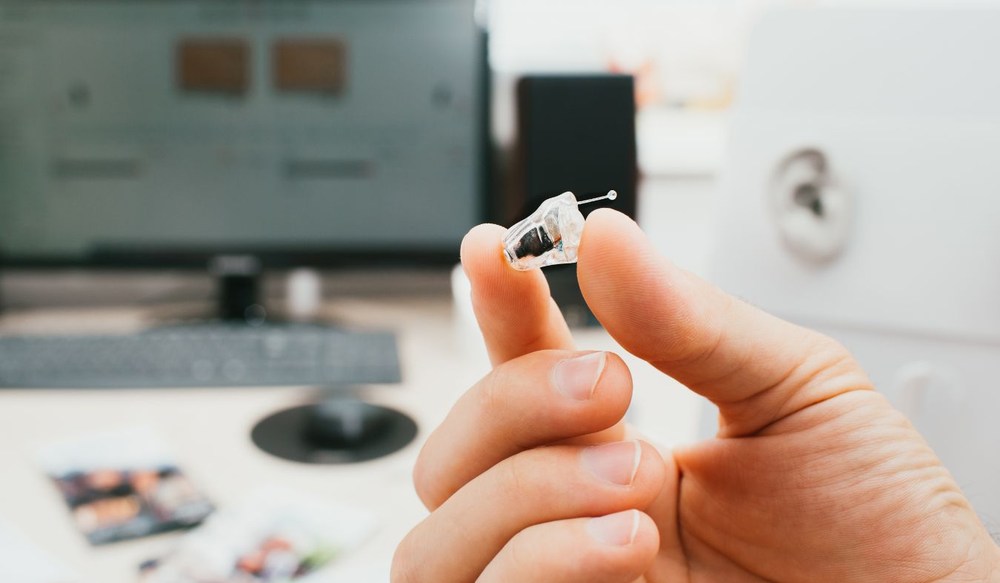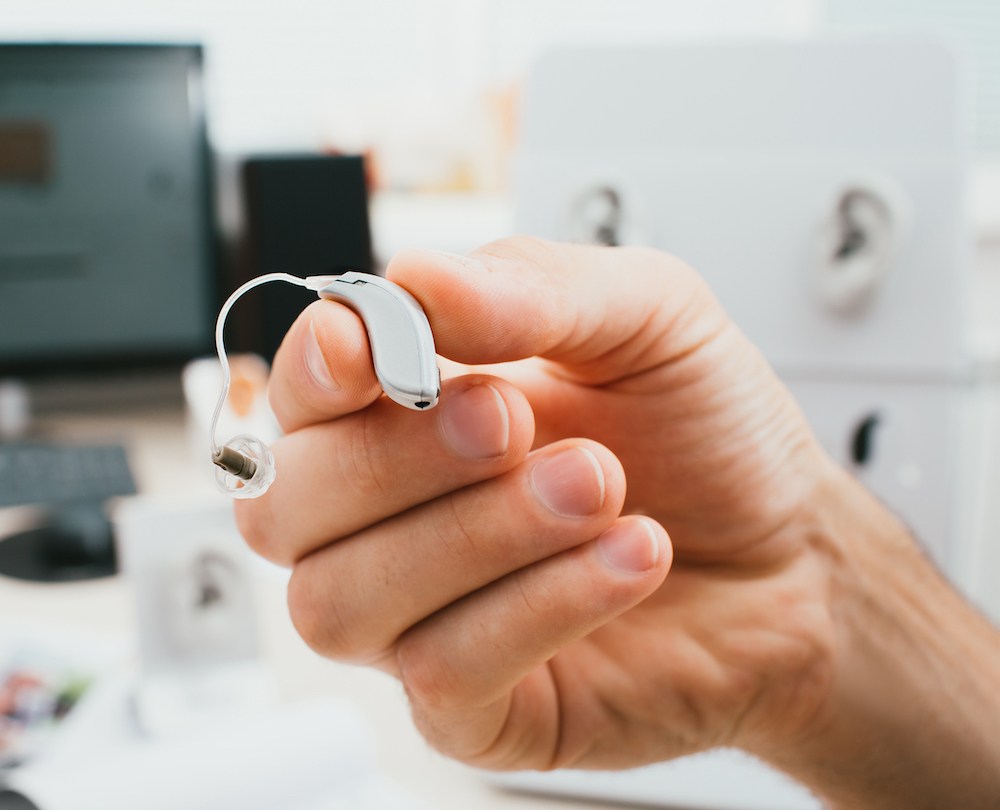Understanding Hearing Aid Feedback: Causes and Solutions
That annoying whistling or squealing sound from your hearing aids can turn
We value our patients and want everyone to be safe. We will be happy to see any patient that is in need of our service. Service is our #1 priority!

By: admin | February 18, 2025
Winter weather brings unique challenges when you wear hearing aids. Cold winds, sleet and rain aren’t just uncomfortable – they can affect how well your hearing devices work. These tiny but powerful instruments help you stay connected throughout your day, from morning meetings to evening activities. But exposure to winter moisture can temporarily disrupt their performance or even lead to damage over time.
Just like you protect your phone from the elements, your hearing aids need special attention during the cold months. Taking simple steps to shield your devices from winter moisture helps ensure they keep working reliably when you need them most.
The main issue is that moisture, in any form, can have harmful effects on your hearing aids. Winter, in particular, presents a heightened risk due to increased moisture levels, which come not only from obvious sources like sleet and rain but also from less visible threats like condensation caused by sudden temperature changes. Cold air holds less moisture than warm air, so when you move from a frigid outdoor environment into a heated indoor space, the sudden shift in temperature can cause condensation to form on your hearing aids. This moisture can gradually seep into the device’s delicate internal components, potentially leading to corrosion, reduced sound quality or even complete malfunction.
Additionally, winter activities can further expose hearing aids to damaging moisture. Engaging in outdoor sports like skiing, ice skating or even a brisk walk in the cold can lead to perspiration, which may accumulate inside the hearing aid. Even if the moisture isn’t immediately visible, prolonged exposure can affect the device’s performance over time. Wearing hats, earmuffs or hoods can trap warmth around the ears, increasing the chances of sweating, which can then transfer moisture to the hearing aids. Similarly, exposure to wind-driven freezing rain can allow moisture to collect in small crevices of the device, making it more susceptible to damage.
Cold weather can affect your hearing instruments in several ways, making it essential to understand how winter conditions impact their performance. To begin with, low temperatures can cause battery life to dwindle more rapidly than usual. Hearing aid batteries function through chemical reactions, and colder temperatures slow these reactions down, reducing efficiency.
Zinc-air batteries, commonly used in hearing aids, require oxygen to generate power, and in cold weather, the air is often drier, which can further hinder battery performance. This means users may notice their batteries draining faster than expected or experiencing sudden power loss. Lithium-ion rechargeable batteries can also be affected, as extreme cold can temporarily reduce their charge-holding capacity.
Beyond battery concerns, cold temperatures can also affect the physical components of hearing aids. Plastics and other materials used in their construction may become more rigid and brittle in freezing conditions, increasing the risk of cracks or damage if dropped. Buttons, volume controls and battery compartments may become more difficult to operate with cold or gloved hands, making it important to handle the devices carefully. Additionally, tubing in behind-the-ear models can harden in the cold, potentially impacting sound transmission and overall comfort.
Spotting the signs of moisture damage in your hearing aids is a key step towards maintaining their performance and durability. One common sign is inconsistent sound quality, which may show up as fluctuating volume levels or distorted sounds. Another indicator could be frequent battery failure, even after replacing them with new ones.
Physical changes to the device might also hint at moisture damage. These can include corrosion on the battery contacts or any visible moisture within the battery compartment. If you notice any of these signs, it’s important to act quickly and consult with your hearing health professional to prevent further damage.
As we continue our discussion on winter’s impact on your hearing aids, let’s focus on some practical tips to prevent moisture buildup in your devices. Moisture can sneak into your hearing aids and wreak havoc on their delicate components, leading to potential damage or malfunction. But don’t worry! There are several steps you can take to prevent this from happening.
Here are some helpful tips:
Proper storage of your hearing aids is essential for maintaining their performance and longevity, especially when they are not in use. One of the most effective strategies is to store them in a dry, temperature-controlled environment. Exposure to extreme temperatures – whether too hot or too cold – can affect the delicate electronic components and reduce battery efficiency. Instead of leaving them in a car, near a heater or in direct sunlight, store your hearing aids in a protective case when they are not being worn. This helps shield them from potential environmental damage while keeping them safe from accidental drops or exposure to dust and debris.
Another key practice is using a drying kit or dehumidifier, particularly in humid climates or after exposure to moisture. Even if your hearing aids don’t seem damp, small amounts of moisture can build up inside, leading to potential malfunctions over time. A drying kit or dehumidifier removes any trapped moisture overnight, helping to extend the lifespan of the device. For those who use rechargeable hearing aids, it’s important to follow the manufacturer’s charging guidelines and store the device in its designated charging station rather than leaving it plugged in indefinitely. Taking these simple precautions ensures that your hearing aids remain in optimal condition, providing clear and reliable sound whenever you need them.
Have you considered the importance of regular consultations with your hearing health professional during winter? Cold weather can introduce unique challenges for your hearing aids, making routine check-ups even more essential. Regular visits provide an opportunity to ensure that your devices are functioning optimally despite exposure to low temperatures, moisture, and other winter-related factors. These appointments allow professionals to assess the overall condition of your hearing aids, ensuring that any potential issues – like decreased battery performance or sound distortion – are addressed before they become more significant problems.
Beyond performance checks, these consultations also include a thorough cleaning and inspection, which is especially important in winter when condensation and moisture buildup are more common. Even small amounts of trapped moisture can impact sound quality or lead to internal damage over time. A professional cleaning helps remove any accumulated debris, wax, or moisture that may have entered the device, preserving its longevity and reliability. Additionally, your provider can offer tailored advice on winter care strategies, recommend protective accessories, and make adjustments to settings if needed, helping you get the best performance from your hearing aids throughout the colder months.
Winter weather can present challenges for hearing aid users, but the right accessories can help protect devices from cold temperatures, moisture and other seasonal hazards. Hearing aid sweatbands or protective covers are particularly useful for shielding your devices from snow, rain and condensation. These fabric covers fit over behind-the-ear hearing aids, creating a barrier that helps prevent moisture from seeping into the device while still allowing sound to pass through clearly. They also help reduce wind noise, which can be a common issue during colder months.
Another valuable accessory for winter is a drying kit or dehumidifier. Even if you take precautions, moisture from condensation or snow exposure can accumulate in your hearing aids throughout the day. Using a drying kit overnight removes excess moisture, helping to prevent damage and ensure your devices function properly. For those who spend extended time outdoors, portable hearing aid cases with built-in dehumidifiers can provide extra protection while on the go. Additionally, battery storage cases are useful for keeping spare batteries safe and dry, as cold temperatures can drain battery life more quickly. Investing in these accessories can help keep your hearing aids working efficiently all winter long.
Protecting your hearing aids from winter moisture is an essential step towards ensuring their longevity and optimal performance. It’s not just about the device itself but also about maintaining your quality of life and ability to connect with the world around you. By taking a proactive approach, you can effectively combat the challenges that winter brings to your hearing aids.
If you have any concerns or questions about safeguarding your hearing aids from winter dampness, don’t hesitate to reach out for professional advice. The team at Affordable Hearing is always ready to assist you. Depending on where you are located, you can contact us at one of our following locations in South Carolina:
We are committed to helping our patients maintain their hearing health in all seasons. So, let’s work together this winter to ensure that your hearing aids continue providing high-quality sound without interruption!
Tags: hearing aid basics, hearing aid repair, hearing aid styles

That annoying whistling or squealing sound from your hearing aids can turn
By: admin | October 20, 2025

Your hearing aids need to work everywhere you do, not just in quiet rooms.
By: admin | July 29, 2025

When you have trouble hearing, it affects how your entire family talks
By: admin | June 20, 2025
